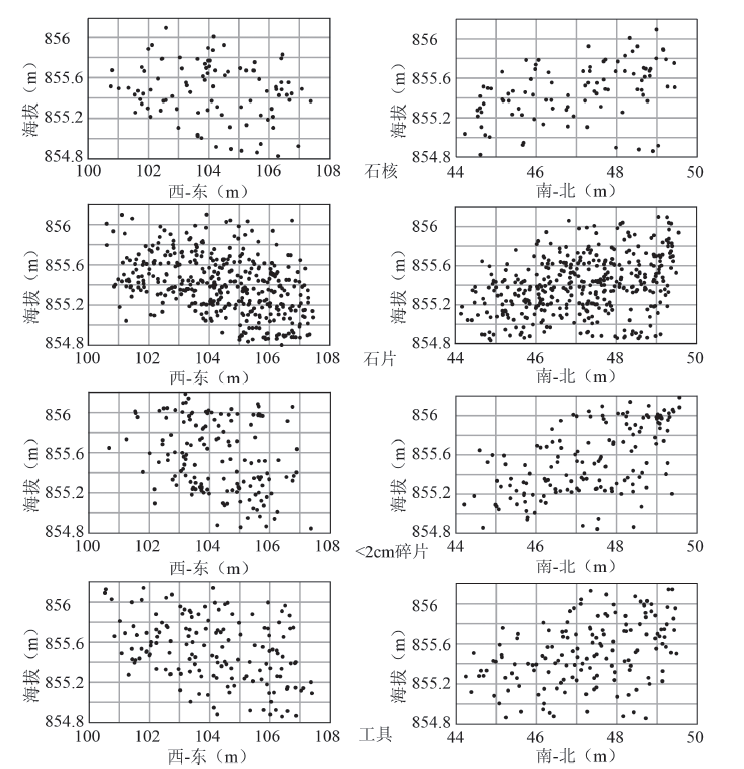| [1] |
张萌, 陈淳. 宾福德的周口店埋藏学研究与旧石器考古学理论建构[J]. 人类学学报, 2019,38(4):536-546
|
| [2] |
尤玉柱. 史前考古埋藏学概论[M].文物出版社, 1989
|
| [3] |
迈克尔·希弗, 陈淳. 关于遗址形成过程研究[J]. 南方文物,2015(2): 182-192+181
|
| [4] |
陈胜前. 考古遗址学—考古信息的嬗变与传递研究[J].南方文物, 2016(2):72-78
|
| [5] |
曲彤丽, 陈宥成. 史前埋藏学的历史回顾与再思考[J].南方文物, 2016(2):79-83
|
| [6] |
李炎贤, 谢飞, 石金鸣. 河北阳原板井子石制品的初步研究[A].见: 中国科学院古脊椎动物与古人类研究所(编).参加第十三届国际第四纪大会论文选[C]. 北京:科学技术出版社, 1991: 74-99
|
| [7] |
谢飞, 李珺, 刘连强. 泥河湾旧石器文化[M]. 石家庄: 花山文艺出版社, 2006
|
| [8] |
山西博物院, 河北省文物研究所. 河北阳原板井子旧石器时代遗址1988年发掘报告[A].见: 河北省文物研究所(编).河北省考古文集(五)[C]. 北京:科学出版社, 2014: 1-28
|
| [9] |
任进成, 李锋, 王晓敏, 等. 河北阳原县板井子旧石器时代遗址2015年发掘简报[J]. 考古,2018(11): 3-14+2
|
| [10] |
Schick KD. Stone Age Sites in the Making: experiments in the formation and transformation of archaeological occurrences[M]. Oxford: BAR International Series 319, 1986
|
| [11] |
Schick KD. Geoarchaeological analysis of an Acheulean site at Kalambo Falls, Zambia[J]. Geoarchaeology, 1992,7(1):1-26
doi: 10.1002/(ISSN)1520-6548
URL
|
| [12] |
Pei SW, Niu DW, Guan Y, et al. The earliest Late Paleolithic in North China: Site formation processes at Shuidonggou Locality 7[J]. Quaternary International, 2014,347:122-132
doi: 10.1016/j.quaint.2014.03.052
URL
|
| [13] |
Pei SW, Niu DW, Guan Y, et al. Middle Pleistocene hominin occupation in the Danjiangkou Reservoir Region, Central China: studies of formation processes and stone technology of Maling 2A Site[J]. Journal of Archaeological Science, 2015,53:391-407
doi: 10.1016/j.jas.2014.10.022
URL
|
| [14] |
裴树文. 旧石器时代旷野遗址形成过程研究综述[J]. 人类学学报, 2019,38(1):1-18
|
| [15] |
Fladmark KR. Microdebitage analysis: initial consideration[J]. Journal of Archaeological Science, 1982,9(2):205-220
doi: 10.1016/0305-4403(82)90050-4
URL
|
| [16] |
陈淳. 废片分析和旧石器研究[J].文物季刊, 1993(1):10-15
|
| [17] |
王春雪. 旧石器时代遗址废片分析:回顾与展望[J].边疆考古研究, 2012(1):361-381
|
| [18] |
任进成, 李锋, 陈福友, 等. 石制品废片尺寸分布的实验研究:以泥河湾盆地大田洼区域燧石原料为例[J]. 人类学学报, 2020,39(3):379-391
|
| [19] |
裴树文, 贾真秀, 马东东, 等. 泥河湾盆地麻地沟E5旧石器地点的遗址成因与石器技术[J]. 人类学学报, 2016,35(4):493-508
|
| [20] |
Petraglia MD, Potts R. Water flow and the formation of Early Pleistocene artifact sites in Olduvai Gorge, Tanzania[J]. Journal of Anthropological Archaeology, 1994,13(3):228-254
doi: 10.1006/jaar.1994.1014
URL
|
| [21] |
Shea JJ. Artifact abrasion, fluvial processes, and “living floors” from the Early Paleolithic site of ’Ubeidiya (Jordan Valley, Israel)[J]. Geoarchaeology, 1999,14(2):191-207
doi: 10.1002/(ISSN)1520-6548
URL
|
| [22] |
Benito-Calvo A, de la Torre I. Analysis of orientation patterns in Olduvai Bed I assemblages using GIS techniques: Implications for site formation processes[J]. Journal of Human Evolution, 2011,61(1):50-60
doi: 10.1016/j.jhevol.2011.02.011
pmid: 21470661
|
| [23] |
Malinsky-Buller A, Hovers E, Marder O. Making time: ‘living floors’, ‘palimpsests’ and site formation processes - A perspective from the open-air Lower Paleolithic site of Revadim Quarry, Israel[J]. Journal of Anthropological Archaeology, 2011,30(2):89-101
doi: 10.1016/j.jaa.2010.11.002
URL
|
| [24] |
Li H, Li ZY, Lotter MG, et al. Formation processes at the Early Late Pleistocene archaic human site of Lingjing, China[J]. Journal of Archaeological Science, 2018,96:73-84
doi: 10.1016/j.jas.2018.05.004
URL
|
















